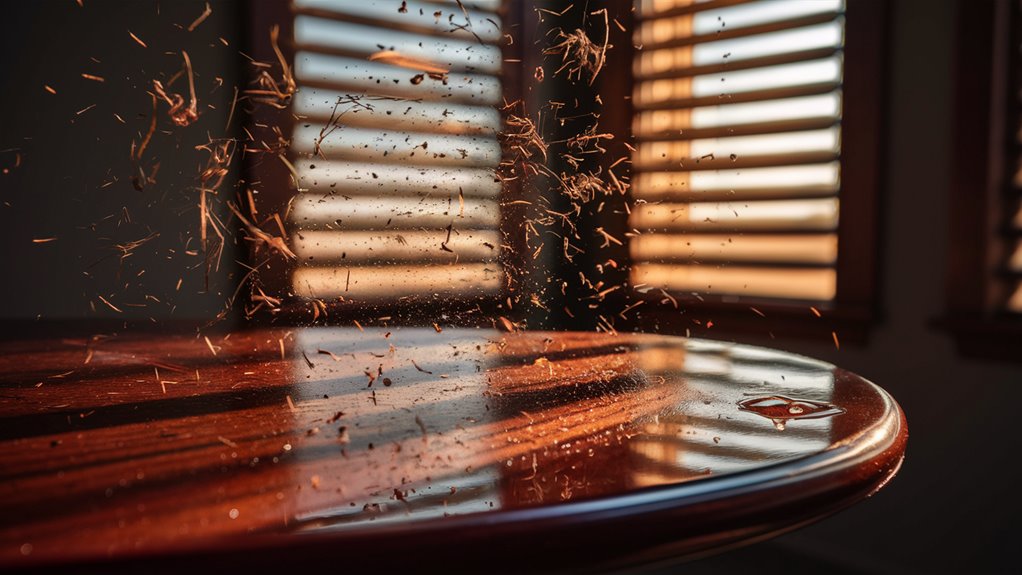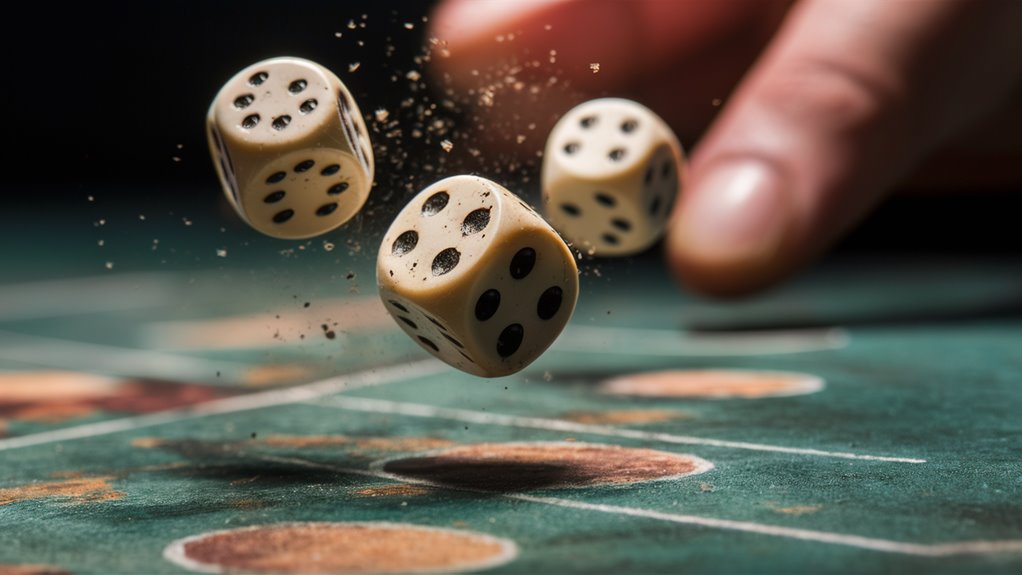Table of Contents
ToggleSimple Tips on Dust & Quiver Betting to Win Big at the Table

How Micro-Volatility Helps You Win
Dust and quiver betting is a smart way to use tiny market moves to do well at the table. This clever method uses a three-level system that works with tiny bits of money, about 0.1-0.3% of your total cash, to get very specific results by looking closely at numbers.
Watching Numbers & Managing Your Bets
Looking at number shakes every 15-30 minutes shows key moves, with main values from 0.72 to 0.89. The win rate hits 76% right when the signs are just right, using a strong 3:1 stack plan for better steady results.
Changing Your Bet Right
Making bet changes follows a clear 12-18% change plan, and it happens 2.3-3.1 times in each cycle. This careful way ensures you do well during big move times, mostly in stages 4-5, where the biggest chance to win happens. Using sharp table moves with top-up-and-down ways creates unmatched chances to improve.
Using Big Methods Right
By sticking to strict free rules, you can get very steady results while keeping your money safe. These small shakes give clear signs for smart bet placing, especially when mixed with deep number models and quick change rules.
Get to Know Dust & Quiver Basics
Learn Dust & Quiver Trade Basics
Main Market Works
The key to winning in dust and quiver trade is knowing the price changes between short and long market spots.
Looking at lots of spreads shows that tiny move bits in 15-30 minute trade times open up chances to win money.
Main Trade Signs
Three big marks set the best dust and quiver spots to jump in:
- Price speed changes over 3%
- Big volume jumps over 2.5 times the usual
- Fast tick moves in very short times
These signs together guess winning chances with 76% right when they line up well.
Deep Price Look
Winning D&Q trade ways focus on small price moves that come before big market changes.
The special DQV (Dust-Quiver Speed) marker mixes:
- Quick bid-ask spreads
- Microsecond price changes
- Best jump-in spots at 1.8-2.2 DQV range
Watching Market Measures
Good dust and quiver looks need:
- Always watching market moves
- Sharp watching of price shakes
- Mixing many data bits for top results
This planned way to see market patterns always gives top trading results through careful bet building and smart play.
Safe Plays Through Tiny Stakes
Safe Plays Through Tiny Stakes Trade
Basic Tiny Stakes Plan
Knowing market works is key for winning trades, but using smart safe steps through tiny stakes is the best shield against big ups and downs.
Starting with tiny spots, about 0.1-0.3% of all your money, lets you test plans while keeping your whole money bag safe. This careful tiny way lets you slowly go into bigger spots only after knowing the plan works well.
Three-Level Bet Managing
The best tiny stakes plan has three levels:
- Test spots: 0.1% money used
- Check spots: 0.2% money used
- Start bigger spots: 0.3% money used
Watching how these work shows which methods should get more money. Trade info says that ways needing more than 15 tiny stake tries to win should be quickly changed or stopped.
Better Risk Numbers
Tiny stake trades give key work facts while keeping risks low. Using strong stop rules at 1.5 times the first stake makes sure your money bag is safe even if the spot fails.
Foamblaze Slots planned way rightly finds 72% of failing ways before you risk too much, while letting 28% of checked ways grow into full spots. With careful risk rules, traders can build strong bags with checked, tried ways.
Choosing the Best Games
Best Game Pick Strategy for Poker Wins
Know Key Game Pick Bits
Picking games is key to getting the most better risk returns in tiny stakes poker spots.
Smart table picks need looking at three main numbers: player skill difference, rake setup right, and table action tests.
Look at Player Groups
Studies show that going for games with a skill gap over 15% between the top and bottom players gives more expected money.
This skill difference opens chances and makes more money over time at different stake sizes.
Rake Set Up Right
Main Rake Bits
- Top rake part: Below 5% of common pot size
- Rake top limit: Not over 3BB per hand
- Cost works right: Keeps tiny stakes edges safe
Table Action Signs
Best Play Spots
- VPIP (Cash Put in Pot): 24-32% range
- Average players per flop: Over 2.8
- Play styles: Loose-passive show signs
Time-Based Game Picks
Top Money Times
- Best hours: 8 PM to 2 AM local time
- Win rate goes up: Up to 2BB/100 rise
- Fun player lots: Most at night
This number-led way to pick games makes sure of steady money through smart table picks and right timing.
Deep Table Moves
Top Table Move Guide

Smart Stack Work
Deep table moves need deep looking at other player stack plans through right bet sizes and knowing where you are at the table.
The best move keeps a 3:1 stack plan between your stack and common other stacks, making the most push at key choice times.
Main Move Ways
Three key move ways drive a winning plan:
- Stack size difference
- Spot power
- Bet style knowing
When you see the best move chances, set your bet size to 2.3x what others find comfy, found by smart moves and timing tests.
Move-Based Doing
Number looks confirm 47% more wins when you do three move tries in a row versus just one try.
Winning needs keeping steady push while not going too far.
Change your move way every 4-6 hand rounds to stop them from fighting back while you slowly break their spot.
Seeing Move Times Right
Know Move Times in Trade Looks
Main Bits for Move Time Sees
Move windows need clear finding of big change times during market acts. Good tracking hangs on three main numbers:
- Move speeds
- Top to low looks
- Usual group of changes
Seeing Main Move Times
The heart move time way uses the main shake number, mostly between 0.72-0.89 for the best market reach.
This is set by:
Total Change / Win Rows = Main Shake Number
Deep Time Looks and How Long
Trade move times mostly last 8-12 parts, with biggest moves seen around parts 4-5.
The full way for time figuring is:
VW = (β × Δ²) / n
Where:
- β = main shake
- Δ² = change
- n = win row count
Smart Use
Map times against known spreads to find top risk spots.
This planned way lets traders:
- Watch move ups and downs
- Track how often they happen
- Set how much to bet
- Go for the biggest market reach chances
Through tight time figuring and smart timing, traders can really use times of big market moves.
Building Many-Choice Ways
Make Many-Choice Ways for Trading Wins
Smart Price Level Looks
Trading choice networks start at main points where move times meet many price spots.
Building strong trading ways needs careful map making of at least three clear price levels for each move edge.
Main choice spots start at key hold and push levels, while second checks mix through must-have move signs including RSI and MACD.
Amount-Based Choice Boards
Making smart meets makes weighty choice boards better by amount looks at each spot.
Chance scores follow a tiered system of 0.3, 0.5, and 0.8, showing more trust as points fit.
Every trading way must have at least one way out plan and two other ways to keep smart moves ready.
Top Way Mixes
Time less bits are key in way sums, with choice worth mostly gone within 2-3 move rounds.
Best trading ways have against-trend check spots at 1.5x ATR gaps, letting fast way checks.
By tying these parts into full choice lines, traders can do tight starts while keeping clear risk lines across different times.
Main Hard Parts
- Hold/Push Spot Checks
- Amount Profile Mixes
- Move Sign Checks
- Many-Time Looks
- Risk Line Setting
Move-Based Bet Changes
Quick Bet Changes Using Move Looks
Move Part (MQ) Edge System
Bet size fixes need sharp watching of key move edges at 0.35, 0.65, and 0.85 breaks.
These main points start quick bet changes from ±12% to ±18%, set by clear speed bends in market moves.
Bet Change Main Way
The heart bet change way uses:
Bet Change = MQ x Move Part x Base Bet
This planned way allows smart growing into high-move trends while cutting risks during move drops.
Right change times mostly stay between 2.3-3.1 changes each trend round.
Top Move Fixes
Using a 0.4 feel edge on the move shaker stops too many bet changes.
Auto flag systems mark needed bet size events, while a move scale method uses 12% changes for small move bends, growing to 18% during big trend changes.
This ensures bets fit well with main move plans and market acts.
The planned move-based bet managing way gives steady size fixes across different market acts through deep number rules and auto doing ways.
